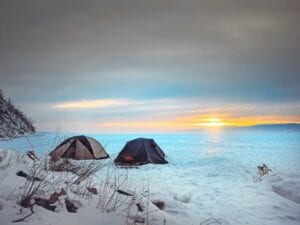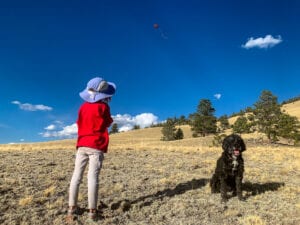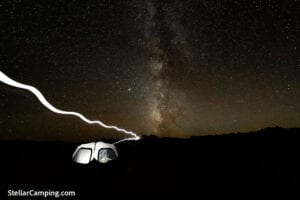Sleeping bags for camping

How should you choose a sleeping bag for camping? We’ll break it down for you based on a few major considerations.
Car camping vs. backcountry camping
- Car camping bags tend to be heavier, more spacious, comfier, and cheaper.
- Backcountry bags usually are lighter, less spacious, less comfy, and pricier. For backpacking, lightness and how well the bag compresses are critical factors.
Temperature ratings
- Bags come in three basic categories:
- Summer: 35 degrees (Fahrenheit) and up
- 3-season: 15-30 degrees
- Winter: 10 degrees and under
- Temperature ratings are premised on the assumption that you’re using a sleeping pad underneath your bag to insulate you from the chilly ground.
- When choosing a bag, err on the side of warmer! If you get too toasty, you can always unzip the bag, stick a leg out the side, or use the unzipped bag as a blanket (though that doesn’t work for mummy bags as well).
- Are you a cold sleeper or a warm sleeper? Some folks get cold at night and may require a winter-rated bag in summer at high elevations.
- A bag liner can make your bag 10-15 degrees warmer—and also helps keep the bag clean. This option from Sea to Summit is highly rated, as is this option from Cocoon.
Bag shapes
Bags generally come in three main shapes (though some variations exist, including double bags for couples):
- Mummy
- Good for backpacking because it has less material
- Snug fit
- Tend to be lighter
- Have hoods
- Can make some people feel claustrophobic and uncomfortable
- Can be challenging for side sleepers because there’s not enough space to let you move your knees toward your chest
- Rectangular
- Too heavy for backpacking
- Spacious
- Comfortable
- Don’t have hoods
- Semi-rectangular
- A hybrid between mummy and rectangular bags
- Share some of the most attractive characteristics of mummy and rectangular bags
- Usually have hoods
Synthetic vs. down
- Down is generally warmer, lighter, more compressible, pricier, and more durable, but they don’t do well when wet.
- The higher the fill power, the warmer, but a 20-degree bag with 650 fill power is just as warm as a 20-degree bag with 850 fill power—the former just has more fill.
- Look for RDS (Responsible Down Standard) or TDS (global Traceable Down Standard).
- Synthetic tends to be heavier, better when wet, less compressible, less pricey, and less durable, since it can pack down and lose its insulating ability over time.
- Synthetic doesn’t use animal products
Sizing
- Bags designed for women are a little narrower in the shoulders and wider in the hips than men’s bags. Women tend to sleep a little colder than men, which temperature ratings for women’s bags take into account.
- Choose a bag sized long enough that your feet don’t hit the end and compress the insulation there, but not so long that there’s dead space around your feet, since that can cool the bag down.
- Normally, a bag should be a few inches longer than you.
- Choosing the right sized bag is especially important for mummy bags.
- It’s always helpful to try out the bag in person.
Sleeping bag zippers and pockets
- Look for snag-free zippers.
- Whether a zipper is on the right or left side isn’t hugely important, though many righties find it easier to zip on their left side and vice versa.
- A draft tube and collar provide insulation around the zipper on bags meant for colder conditions.
- Consider whether the zipper allows for unzipping around the feet to let moist air out and prevent dampness in the bag.
- Couples may want to buy bags that zip together for extra warmth and cuddling, which may necessitate buying two of the same make/model.
- Pockets can be helpful for items like headlamps, phones, and watches.
Bags for your sleeping bags
- You’ll need a compression sack when backpacking, such as this one.
- At home, store bags in a loose storage sack or lie them flat in a safe location to preserve their insulating ability.
So what are some of the best sleeping bags for camping? Here are a few models to consider:
- Feathered Friends Swallow 20 YF (backpacking)
- Marmot Yolla Bolly 30 (semi-rectangular)
- NEMO Forte 35 – men’s and women’s (budget)
- Kelty Galactic 30 (car camping, budget)
- The North Face The One bag (has interchangeable layers for differing temperatures)
If you want to study up more, here are a few trustworthy ratings of current model sleeping bags:






